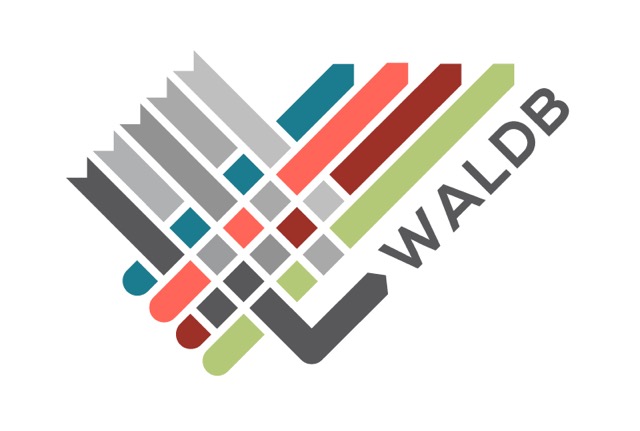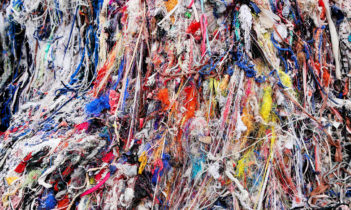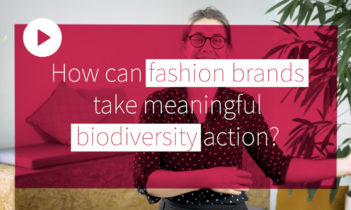World Apparel & Footwear Life Cycle Assessment Database
To drive metrics-based sustainability programs, companies in the fashion industry are increasingly looking for reliable data to make informed decisions and to prioritize their sustainability efforts.
Life Cycle Assessments provide a comprehensive and holistic way to assess environmental impacts over the full value chain. In response to the urgent need for reliable environmental impact data in the apparel and footwear sector, Quantis spearheaded the development of the World Apparel & Footwear Life Cycle Assessment Database.
The World Apparel and Footwear Life Cycle Assessment Database (WALDB) was founded by Quantis alongside a pre-competitive consortium of leading organizations and companies from the apparel and footwear sector to solve this data challenge and to deliver robust data for environmental impact assessment and footprinting.

"Through WALDB, Quantis is providing useful and high quality LCA data on the impacts of apparel and footwear supply chains. This information is critical for good decision making and will inform and support sustainability strategies across the industry for years to come"
Sylvie Benard
Former Environmental Director, LVMH
Pre-competitive collaboration to measure environmental impacts
WALDB, now accessible via eQosphere, is pioneering data-driven sustainability in fashion through the following features:
-
- Robust data quality: WALDB is a robust database, offering reliable, high-quality data to its users. The robust nature of the database makes it a critical lever for quality sustainability assessments and decision-making, providing a solid foundation for building meaningful environmental strategies in the fashion industry.
- Granularity & transparency: At the heart of WALDB lies the commitment to data granularity and transparency. The database offers disaggregated datasets, enabling companies to understand the specifics of their environmental impacts. This detailed insight facilitates more informed decision-making, enabling brands toidentify and focus on critical hotspots and craft targeted reduction roadmaps.
A broad spectrum of applications:
Identifying hotspots,
Tracking progress,
Quantifying benefits on actions taken to reduce environmental impacts,
Empowering business decisions,
Setting bold targets,
Engaging with stakeholders...
WALDB, now accessible via eQosphere, enables apparel and footwear companies to identify environmental hotspots along their value chain as well as to quantify the benefits of improvement and reduction measures.
The methodology underpinning WALDB is rigorous and comprehensive, compliant with ISO 14040 standards. This adherence to globally recognized standards ensures consistency and coherence across the database, making WALDB a reliable tool for assessing environmental impacts in the fashion industry and building credible communications and marketing effortsas sound metric-based footprint data can be used for sustainability reporting. The database includes all 16 PEF impact categories (including global warming, freshwater eutrophication, water scarcity, abiotic resource depletion) and more. Our work on the European Commission’s Product Environmental Footprint (PEF) initiative is used to update the methodology to ensure harmonization.
WALDB isn’t just a database; it’s an integral part of a brand’s sustainability journey. From identifying environmental hotspots to setting robust sustainability targets, WALDB provides the detailed insights necessary for fashion brands to drive meaningful and measurable change
More than 700+ Datasets
Comprehensive datasets based on primary data and on existing data from scientific studies. The datasets are continuously expanded; are modelled on global and regional levels –regionalised for the 7 most relevant textile producing countries and 28 geographies; including more than 50 processing steps along the apparel/footwear supply chain (e.g. fibre production, yarn, fabric, finishing, leather, shoe production, etc… ). With regards to raw materials they include Cotton (datasets from 11 different Countries), organic and not; Wool, Viscose, Silk, Synthetics (recycled and not), Leather. The full list of datasets is available on-demand.
Partners
Phase 1 launched in 2016. 17 past partners’ list included several key brands – such as Hugo Boss, Kering, legero united, Lenzing, LVMH, SOEX Group/I:CO, the Sustainable Apparel Coalition (SAC) – and a national government – the Swiss Federal Office for the Environment.



